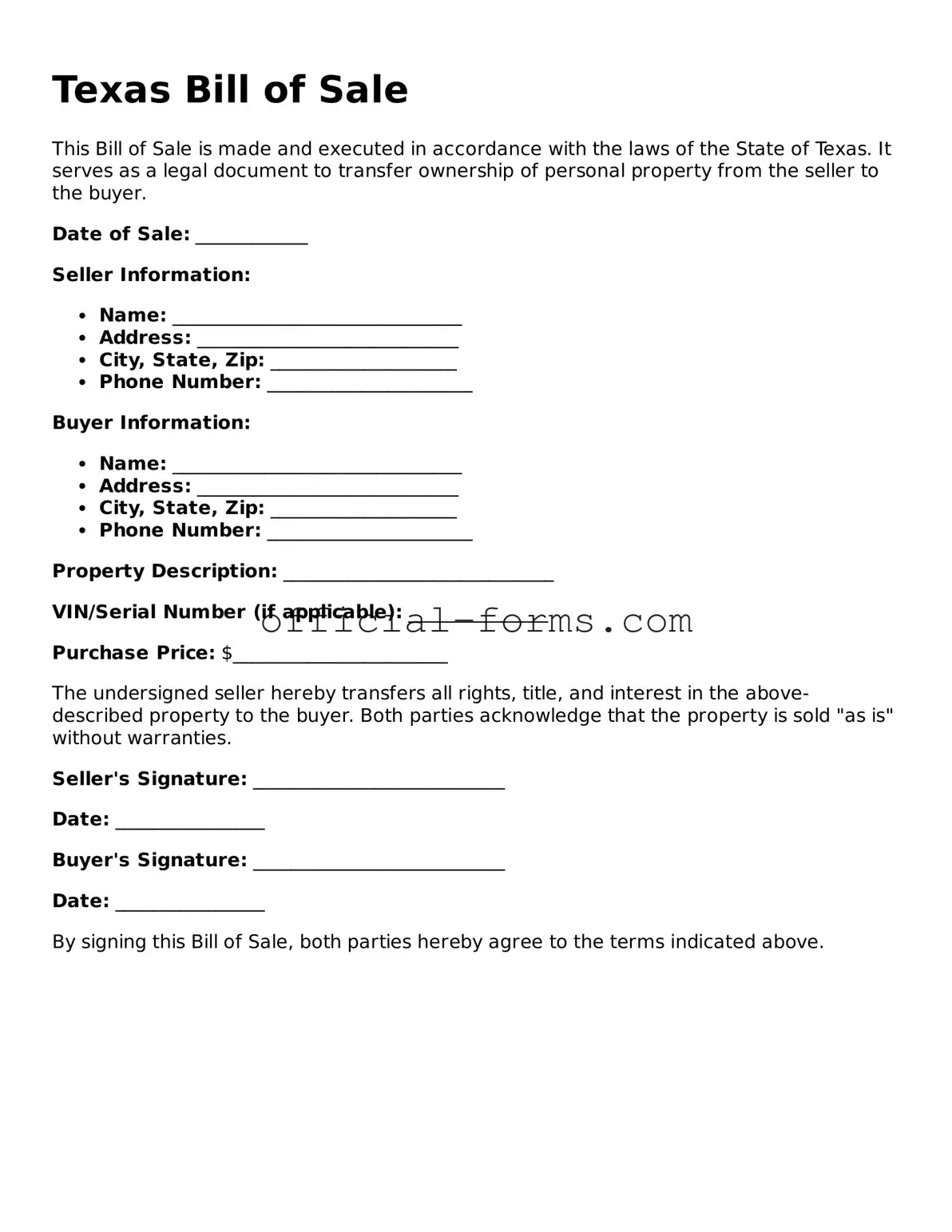Completing a Texas Bill of Sale form can be a straightforward process, but there are common mistakes that individuals often make. Awareness of these pitfalls can help ensure that the document is filled out correctly, avoiding potential issues down the line.
One frequent error is neglecting to include all necessary details about the item being sold. A Bill of Sale should clearly describe the item, including its make, model, year, and any identifying numbers, such as a Vehicle Identification Number (VIN) for cars. Without this information, the document may lack clarity, leading to disputes or confusion about the transaction.
Another mistake involves omitting the names and addresses of both the buyer and the seller. This information is crucial for establishing the identities of the parties involved. If either party's information is missing, it can complicate future transactions or legal matters related to the sale.
People also often forget to include the sale price. While it may seem obvious, specifying the amount agreed upon is essential for legal purposes. This figure not only reflects the transaction but can also be important for tax assessments and potential disputes.
Additionally, failing to sign the Bill of Sale is a common oversight. Both parties must sign the document to validate the transaction. Without signatures, the Bill of Sale may not hold up in court or during any legal proceedings that may arise later.
Another area of concern is not providing a date for the transaction. The date is vital as it marks when the sale occurred. Without a date, it can be challenging to establish timelines for ownership and liability.
Moreover, some individuals may not understand the importance of keeping a copy of the completed Bill of Sale. After filling out the form, both the buyer and seller should retain a copy for their records. This document serves as proof of the transaction and can be invaluable in case of disputes or for future reference.
Lastly, many people overlook the need for witnesses or notarization, especially for high-value items. While not always required, having a witness or notary can add an extra layer of legitimacy to the Bill of Sale. This step can help prevent potential challenges to the validity of the transaction.
